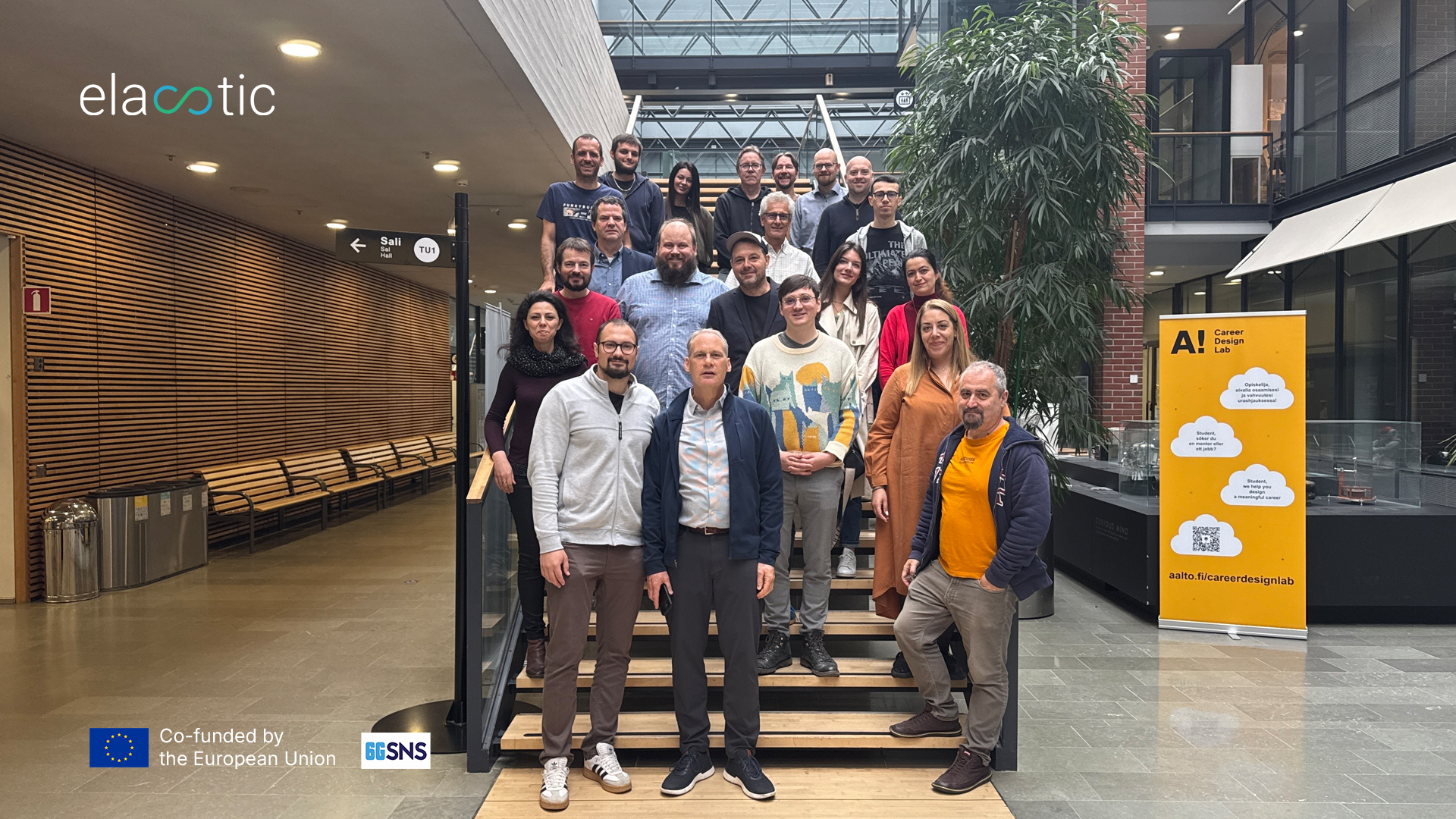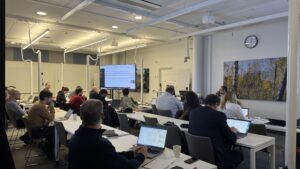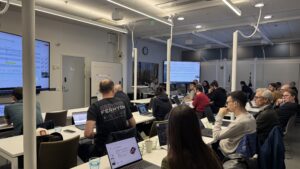ELASTIC Project Holds Plenary Meeting in Helsinki

The ELASTIC consortium gathered in Helsinki, Finland, from June 10–12, 2025, for a plenary and technical meeting hosted by Aalto University. Over the course of three days, project partners reviewed progress, coordinated technical development, and aligned plans ahead of upcoming deliverables and the first project review.
The meeting combined technical workshops with strategic coordination across the project’s work packages. Key topics included demonstrator development, integration planning, component readiness, and progress on dissemination, standardisation, and exploitation activities.
Day 1: Demonstrator Workshops and Planning
The event opened with an introduction by the Technical University of Crete (TUC), followed by in-depth workshops on ELASTIC’s two demonstrators:
-
Demonstrator 1, coordinated by ERF focuses on enabling an IoT data fabric for 6G infrastructure. The session covered key use cases, workflows, architecture diagrams, testbed readiness, validation KPIs, and MVP features.
-
Demonstrator 2, led by THD is aimed at building a privacy-preserving confidential computing platform to migrate sensitive IT services to the cloud. Partners presented the demonstrator architecture, integration interfaces, validation plans, and technical requirements.
Both workshops served to clarify integration points and define short-term development priorities. The day concluded with a session on attestation mechanisms.


Day 2: Live Technology Showcase and WP Updates
Day two began with live demonstrations of the most mature components developed within the project, including:
-
Observability framework for serverless workloads – ERF
-
TEE Hardware Abstraction Layer (HAL) – LUN
-
Mobility attack robust IoT resource allocation model – LUN
-
NETTO – POLITO
-
Static eBPF code security analyzer – POLITO
-
Propeller Orchestrator – AMA
-
Wasm-operator – IMEC
-
WasmHAL Hardware – IMEC
-
TEE Software Management Agent – UVC
-
AI Intrusion Detection/Prevention System – TUC
-
Static analysis of interaction between Wasm modules – AAL
-
Reliable enclave migration protocols – AAL
-
WASI flexibly-defined capabilities – AAL
These showcases helped validate component functionality and supported planning for demonstrator integration.
In the afternoon, the consortium held dedicated sessions for key technical and horizontal work packages:
-
WP5 (Demonstrators) – reviewed demonstrator status, planned integration steps, and prepared for upcoming deliverables.
-
WP4 (Edge Orchestration) – discussed orchestration frameworks, component readiness, and alignment with demonstrator needs.
-
WP6 (Dissemination, Standardisation, Exploitation) – presented updates on communication assets, stakeholder engagement, standardisation work, and future exploitation planning.
Each session included KPI review, identification of blockers, and updates to the respective work plans.
Day 3: Technical Alignment and Project Coordination
The final day focused on core technical WPs:
-
WP3 (Confidential Computing) – covered progress on enclave technologies, remote attestations, and runtime integration.
-
WP2 (Serverless Orchestration) – addressed low-latency FaaS orchestration and cross-layer scheduling mechanisms.
-
WP1 (Executable Isolation) – reviewed results related to WebAssembly and eBPF-based isolation, runtime security, and language extensibility.
In the concluding session, the coordination team (WP7) provided updates on financial and quality management, risk tracking, and ethics. The meeting wrapped up with a summary of priorities and actions for the next six months.
Strengthening Collaboration Beyond the Agenda
Of course, amidst the intensive work sessions, the team also took time to explore the local culture and surroundings. A visit to the historic island of Suomenlinna, a UNESCO World Heritage Site, provided a relaxed setting to enjoy Helsinki together. These shared experiences not only offered a welcome break but also helped strengthen the collaborative spirit among partners—working together, learning together, and sharing moments beyond the project tasks.
About ELASTIC
ELASTIC (Efficient, portabLe And Secure orchesTration for reliable servICes) is a Horizon Europe project developing a secure, portable, and efficient orchestration platform for distributed workloads. The project integrates technologies such as WebAssembly, eBPF, and Trusted Execution Environments to support next-generation secure computing.
More information: https://elasticproject.eu
